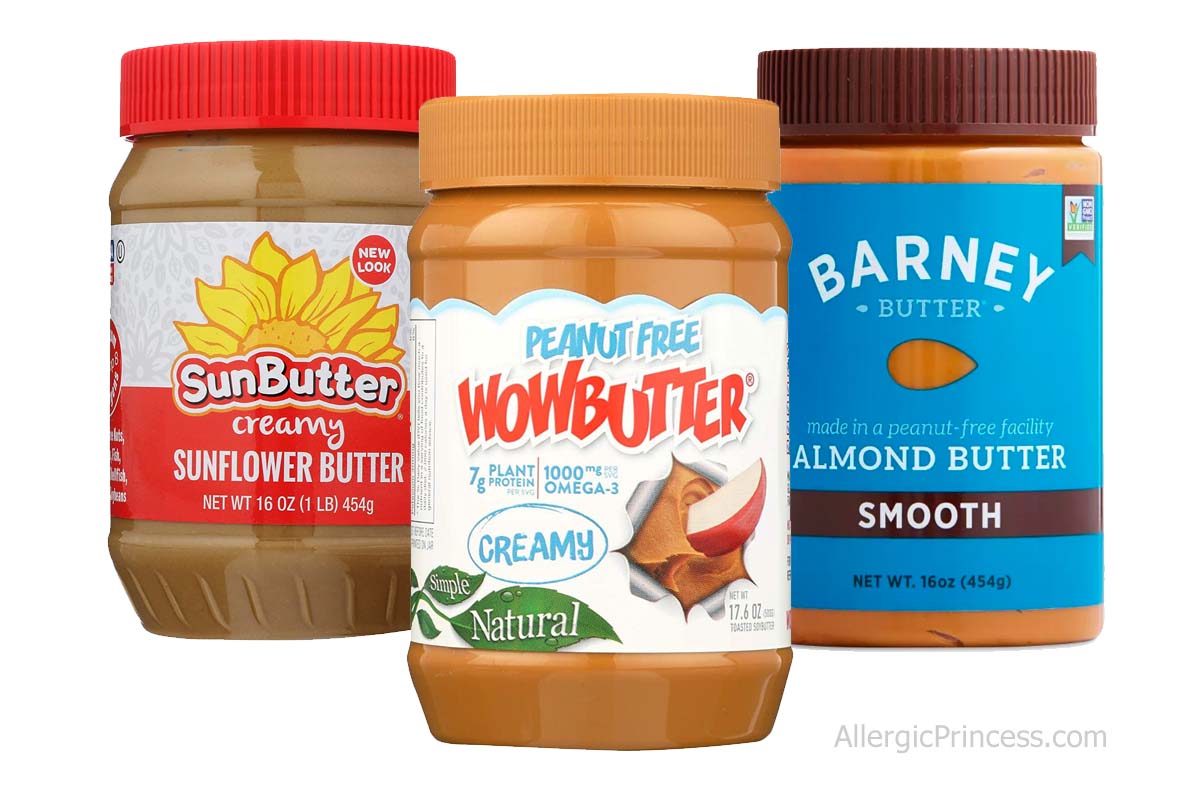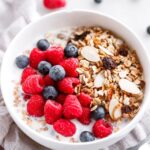Craving the creamy richness of nut butter but facing allergies or dietary restrictions? Fear not! This guide unveils the secrets to crafting delectable, nut-free butter substitutes that rival their nutty counterparts in both flavor and texture. We’ll explore a world of seed-based options, innovative vegan alternatives, and flavor-enhancing techniques, transforming simple ingredients into culinary delights. Prepare to embark on a journey of creamy discovery, learning how to create smooth, spreadable butters perfect for sandwiches, sauces, and baking.
From the robust earthiness of sunflower seed butter to the subtle sweetness of pumpkin seed butter, we’ll delve into the unique characteristics of each seed-based option. We’ll also explore the surprising versatility of ingredients like white beans and silken tofu, showcasing how simple pantry staples can be transformed into luxuriously creamy spreads. Discover how to adjust textures, incorporate exciting flavors, and master the art of storage to keep your homemade nut-free butters fresh and delicious for weeks to come. Get ready to expand your culinary horizons and enjoy the delightful world of nut-free butter alternatives.
Best Seed-Based Butters

Seed butters offer a delicious and nutritious alternative to nut butters, providing a creamy texture and a range of flavors depending on the seed used. They are also a great option for those with nut allergies. This section will explore three popular seed butters: sunflower seed butter, pumpkin seed butter, and tahini, comparing their textures, flavors, nutritional profiles, and providing detailed instructions for making each at home.
Sunflower Seed Butter Properties
Sunflower seed butter boasts a mild, subtly sweet flavor that many find pleasingly versatile. Its texture is generally smooth and creamy, though it can be slightly grittier than some nut butters depending on the roasting and blending process. The color is a warm, light beige. Imagine the creamy texture of a well-made peanut butter, but with a slightly lighter, less intense flavor profile.
Pumpkin Seed Butter Properties
Pumpkin seed butter offers a richer, earthier flavor profile compared to sunflower seed butter. The texture is often slightly denser and creamier, with a pleasant chewiness that comes from the seeds’ slightly larger size. The color is a deeper, more intense green-beige. Think of a more intense, savory version of sunflower seed butter, with a hint of pumpkin spice if the seeds are roasted well.
Tahini Properties
Tahini, made from sesame seeds, stands apart with its distinctly nutty and slightly bitter flavor. It has a characteristic smooth, almost paste-like texture, and its color is a pale, creamy off-white. The flavor is quite unique and robust, often used as a base for sauces and dressings, rather than eaten on its own like other seed butters.
Nutritional Comparison of Seed Butters
The following table summarizes the approximate nutritional content per 100g serving of each seed butter. Note that these values can vary depending on the specific seeds used and processing methods.
| Nutrient | Sunflower Seed Butter | Pumpkin Seed Butter | Tahini |
|---|---|---|---|
| Protein (g) | 20-25 | 20-30 | 15-20 |
| Fat (g) | 50-55 | 45-55 | 50-60 |
| Fiber (g) | 8-12 | 5-10 | 10-15 |
Making Seed Butters: A Step-by-Step Guide
Creating your own seed butter allows for control over ingredients and roasting levels, resulting in a superior product. The following table Artikels the process for each seed butter. Remember to adjust roasting times based on your oven and desired level of toastiness.
| Preparation | Roasting | Blending | Storage |
|---|---|---|---|
| Rinse and dry 1 cup of sunflower seeds thoroughly. | Spread seeds in a single layer on a baking sheet. Roast at 350°F (175°C) for 10-15 minutes, stirring halfway, until lightly browned and fragrant. | Transfer roasted seeds to a food processor. Process until a smooth, creamy butter forms, scraping down the sides as needed. This may take 5-10 minutes. Add 1-2 tablespoons of oil (e.g., sunflower, olive) if needed to achieve desired consistency. | Store in an airtight container in the refrigerator for up to 2 weeks. |
| Rinse and dry 1 cup of pumpkin seeds thoroughly. | Spread seeds in a single layer on a baking sheet. Roast at 350°F (175°C) for 12-18 minutes, stirring halfway, until lightly browned and fragrant. | Transfer roasted seeds to a food processor. Process until a smooth, creamy butter forms, scraping down the sides as needed. This may take 7-12 minutes. Add 1-2 tablespoons of oil (e.g., pumpkin seed, olive) if needed to achieve desired consistency. | Store in an airtight container in the refrigerator for up to 2 weeks. |
| Use 1 cup of raw sesame seeds (hulled or unhulled, depending on preference). | Toasting sesame seeds is optional. If toasting, spread in a single layer on a baking sheet and toast at 300°F (150°C) for 8-10 minutes, stirring frequently, until fragrant. | Transfer sesame seeds to a food processor. Process until a smooth, creamy paste forms, scraping down the sides as needed. This may take 10-15 minutes or longer, depending on the power of your processor. Add 1-2 tablespoons of oil (e.g., sesame, olive) if needed to achieve desired consistency. | Store in an airtight container in the refrigerator for up to 3 weeks. |
Recipe Variations and Applications
Nut-free butter substitutes, with their diverse textures and flavors, offer exciting culinary possibilities beyond simple spreading. Their versatility allows for creative applications in both sweet and savory dishes, enhancing the richness and complexity of various recipes. The following recipes showcase the unique properties of these substitutes and demonstrate how they can be incorporated into everyday cooking and baking.
Savory Sunflower Seed Butter Sandwich Spread
This recipe highlights the subtly nutty flavor and creamy texture of sunflower seed butter, creating a delicious and healthy alternative to traditional nut butters. The addition of herbs and spices elevates the simple spread to a sophisticated culinary experience.
| Recipe Name | Ingredients | Instructions | Serving Suggestions |
|---|---|---|---|
| Savory Sunflower Seed Butter Spread | 1 cup sunflower seed butter, 2 tablespoons finely chopped fresh parsley, 1 tablespoon finely chopped fresh chives, 1 teaspoon Dijon mustard, ½ teaspoon garlic powder, ¼ teaspoon onion powder, Salt and pepper to taste | In a medium bowl, combine sunflower seed butter, parsley, chives, Dijon mustard, garlic powder, and onion powder. Season with salt and pepper to taste. Mix thoroughly until well combined. For a smoother consistency, you can briefly pulse the mixture in a food processor. | Spread generously on whole-wheat bread or crackers. Pair with sliced cucumbers, tomatoes, or sprouts for a light lunch or snack. |
Creamy Pumpkin Seed Butter Pasta Sauce
Pumpkin seed butter brings a unique depth of flavor and a luxuriously creamy texture to this pasta sauce. The earthy notes of the pumpkin seeds complement the sweetness of roasted vegetables, creating a balanced and satisfying dish. The relatively mild flavor of pumpkin seed butter allows other flavors to shine.
| Recipe Name | Ingredients | Instructions | Serving Suggestions |
|---|---|---|---|
| Creamy Pumpkin Seed Butter Pasta Sauce | 1 cup pumpkin seed butter, 1 cup vegetable broth, ½ cup heavy cream or coconut cream, 1 cup roasted butternut squash (cubed), ½ cup roasted red peppers (sliced), 2 cloves garlic (minced), 1 tablespoon olive oil, Salt and pepper to taste | Heat olive oil in a saucepan over medium heat. Add garlic and sauté for 1 minute until fragrant. Stir in pumpkin seed butter, vegetable broth, and cream. Bring to a simmer, stirring constantly. Add roasted butternut squash and red peppers. Reduce heat and simmer for 10 minutes, or until the sauce has thickened slightly. Season with salt and pepper to taste. | Serve over your favorite pasta. Garnish with fresh parsley or Parmesan cheese (optional). A sprinkle of toasted pumpkin seeds adds visual appeal and extra texture. |
Sweet Hemp Seed Butter Brownies
Hemp seed butter’s slightly sweet and earthy flavor adds a unique twist to these fudgy brownies. Its creamy texture contributes to the rich, moist consistency that is characteristic of a perfect brownie. The subtle flavor of hemp seed butter doesn’t overpower the other ingredients, allowing the chocolate to shine.
| Recipe Name | Ingredients | Instructions | Serving Suggestions |
|---|---|---|---|
| Sweet Hemp Seed Butter Brownies | ½ cup hemp seed butter, ½ cup unsweetened cocoa powder, 1 cup granulated sugar, ½ cup brown sugar, 2 large eggs, ½ cup all-purpose flour, ½ teaspoon baking powder, ½ teaspoon salt, ½ cup chocolate chips | Preheat oven to 350°F (175°C). Grease and flour an 8×8 inch baking pan. In a large bowl, whisk together hemp seed butter, cocoa powder, granulated sugar, and brown sugar until well combined. Beat in eggs one at a time. In a separate bowl, whisk together flour, baking powder, and salt. Gradually add dry ingredients to the wet ingredients, mixing until just combined. Stir in chocolate chips. Pour batter into the prepared pan and bake for 25-30 minutes, or until a toothpick inserted into the center comes out with moist crumbs. | Serve warm or at room temperature. Dust with powdered sugar or serve with a scoop of vanilla ice cream. |
Mastering the art of making creamy nut-free butter substitutes opens a world of culinary possibilities. This guide has equipped you with the knowledge and techniques to create a variety of delicious and versatile spreads, from savory sunflower seed butter to sweet white bean creations. Remember to experiment with flavors and textures, tailoring your butters to your personal preferences. With a little practice, you’ll be crafting smooth, flavorful nut-free butters that are not only allergy-friendly but also incredibly satisfying. So, gather your ingredients, embrace the process, and enjoy the delicious results!
User Queries
Can I freeze nut-free butter substitutes?
Yes, freezing extends the shelf life of most nut-free butters. Freeze in airtight containers for up to 3 months.
What if my butter substitute is too thick?
Add a teaspoon of water or oil at a time while blending until you reach your desired consistency.
Are all seed butters naturally gluten-free?
Generally yes, but always check the label to ensure that the seeds haven’t been processed in a facility that also handles gluten-containing products.
How can I make my nut-free butter sweeter?
Add maple syrup, agave nectar, or other liquid sweeteners to taste during the blending process.


